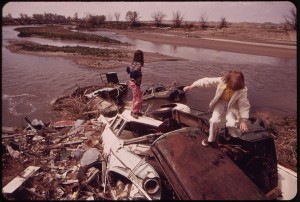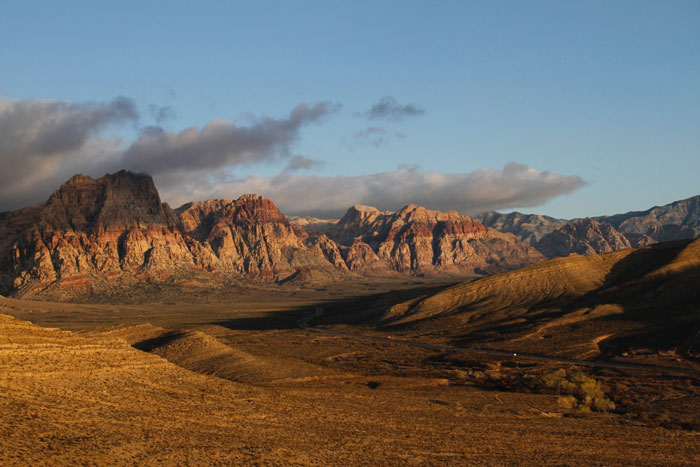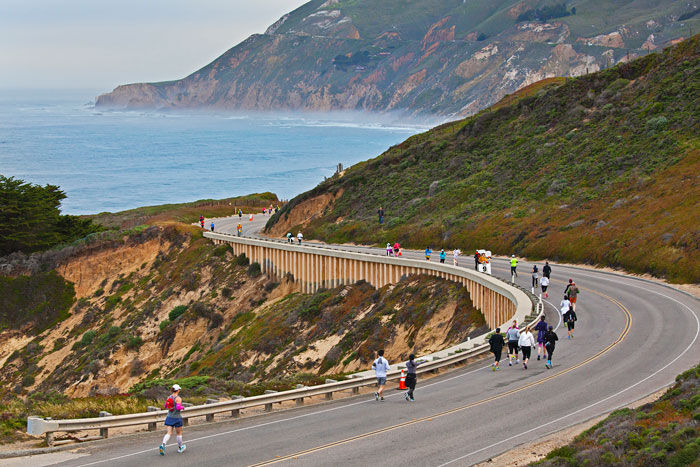- Tahoe’s Nevada Beach Tops the List of Hard-to-Book Campgrounds - 07/17/2024
- Cannabis Watershed Protection Program Cleans Up Illegal Grow Sites - 07/10/2024
- French Fire - 07/05/2024

Communities need to be vigilant about plans to site incinerators, landfills, waste transfer stations, sewage treatment plants or other toxic facilities nearby where they might threaten the health of residents. Pictured: Unwitting children play at a local waste dump. Photo: Bruce McAllister
What can communities do to keep polluters out of the neighborhoods?
— Wendell Bovey, Los Angeles, CA
It’s unfair that communities which are less organized and less wealthy often shoulder the burden of hosting polluters like landfills, incinerators and power plants. “Frequently, these facilities end up in the places that put up the least resistance, either because residents are unaware of the projects planned for their area, or because they don’t have the money, organization, knowledge or political clout to mount effective opposition,” says the Natural Resources Defense Council (NRDC), a leading non-profit.
The key, says NRDC, is to stay informed: “A lot of bad projects slip into communities under the radar,” they caution. Companies looking to site unpopular projects that need approval from local zoning boards count on local residents being absent from the public meetings where the projects get discussed.
Attending planning & zoning or city council meetings is a first line of defense against letting polluters in. Be prepared by getting meeting agendas in advance and looking for red flags that can be discussed with the powers-that-be in person or at public sessions. And keep up with the Public Notices section of the local paper, where public hearings concerning local land use must be announced by law.
Staying informed is one thing, but knowing what to look and listen for is another: “Certain types of development pose potential environmental and health problems for host communities,” reports NRDC. “They need not be automatically opposed, but they should be carefully scrutinized.”
NRDC recommends paying close attention to plans for incinerators, landfills, waste transfer stations, water pollution control or sewage treatment plants, bus or truck depots and parking lots, power plants, highways, airports, metal plating and auto body or auto repair shops. Beyond looking out for these and other types of polluting projects, community residents should be aware of and ask questions about any proposed change in zoning or in the local municipal or county “Master Plan” or “Community Environmental Plan.”
Finding out about a bad project coming your way is only the beginning: “If you find that a proposed change might adversely affect your community, gather as much information about the proposal as possible and inform your neighbors about your concerns,” says NRDC. Arranging for a time and place where locals can meet to discuss what’s happening and organize around preventing it is the next step.
Some of the tasks necessary to mounting a good defense include thoroughly researching a proposed facility’s potential impacts (including contacting people in other areas where similar types of facilities have been sited), bringing in experts and reaching out to more community members to align them accordingly.
If community members are focused on their goals and have enough support from neighbors they can succeed in either blocking a proposed new facility or expansion, or at least in increasing pollution controls. Another positive outcome could be a revision to local ordinances to prevent future polluters from moving in. For more information, see NRDC’s free online guide, “You Can Beat City Hall,” which outlines how to watch out for and organize against polluting entities in our own backyards, so to speak.
CONTACT: NRDC’s “You Can Beat City Hall,” http://www.nrdc.org/cities/living/local/guide.asp.
EarthTalk® is written and edited by Roddy Scheer and Doug Moss and is a registered trademark of E – The Environmental Magazine (www.emagazine.com). Send questions to: earthtalk@emagazine.com.













